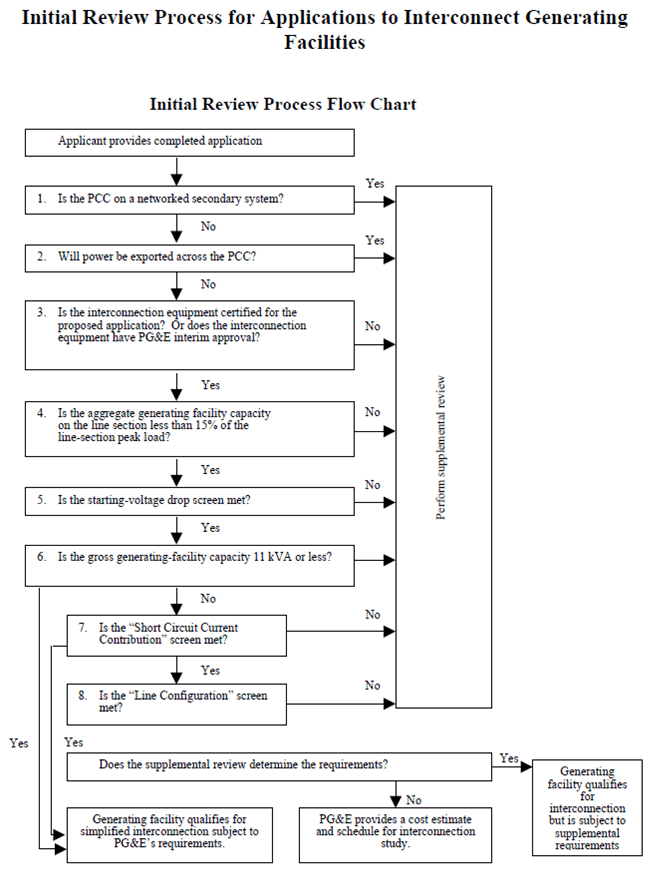3.4 DER Capabilities and DER System Architectures
3.4.3 Typical Interconnection Processes for DER
Utilities have always required DER interconnection processes to be followed in order to ensure the protection and safety of the distribution grid. When only a few DER systems were being interconnected, these processes were developed by each utility, leading to a large variety to specifications and requirements. As more DER systems began to request interconnection to the grid, these one-off requirements become a barrier to efficient interconnections.
In early 2000s, an efforts was started to develop an interconnection standard, IEEE 1547 (see 3.7.1), which defined the electrical and protection requirements. Regulators and utilities quickly updated their interconnection procedures to be based on this standard, although often adding modifications.
At the same time, testing and certification of DER systems was formalized under the UL standard, UL 1741 (see 3.7.3), as a means of certifying the safety of the DER systems in meeting the IEEE 1547 requirements.
These interconnection procedures, even though more standardized electrically, still required utilities to study each interconnection request. Once again as increasing numbers of DER interconnection requests built up, some utilities modified their procedures to “fast track” the smaller or simpler interconnections. A typical flow chart of this process is shown in Figure 11.

Figure 11 : Example PG&E flow chart for DER screening
Utilities screen DG interconnection requests against various criteria to make an initial assessment of impact to the distribution system. In many cases, utilities use this process to determine if a fast-track interconnection procedure that bypasses detailed system impact studies is appropriate.
FERC order 792, issued in November 2013 revised small generator interconnection standards to include a 100% of minimum daytime load screen to supplement the previous screen of 15% of peak load (in place since the SGIP was established in 2005). NREL and industry groups advocated use of a daytime load screen instead of a peak load screen for PV.
In California, Rule 21 specifies “screens” of checklists are used to determine if additional studies are needed or not. These screens also capture the relevant data about the DER systems, including their (electrical) location and the DER nameplate information.
It expected that in the future, additional data may be factored into the screens and studies, such as what advanced functionalities the DER systems are capable of, what communications are available, and who is responsible for managing the DER system (e.g. facility owner or aggregator). This additional information could then be used to establish the detailed interconnection requirements, such as which advanced functionalities would be required to be enabled and whether communications must be established.
IEEE 1547.8 (draft) provides guidelines for categorizing the recommended information exchanges by DER size and EPS “sensitivity”, in which small DRs or small groups of DRs (e.g. <100 kW, medium (e.g. 100 kW – 1 MW) and large DRs or large groups of DRs (e.g. > 1 MW) (based on nameplate information) are located within different environments:
- Low sensitivity environment is characterized by:
- Low generation-to-load ratio, such as smaller than 1-to-2 or 1-to-3
- Strong or stiff EPS (the EPS at the DER location is very stiff and can handle significant fault current,
- Small variability of generation and/or load within area, including due to feeder switching
- High sensitivity environment is characterized by:
- High generation-to-load ratio, such as larger than 1-to-2 or 1-to-3
- Weak Area EPS (there is significant impedance between the DER and the EPS source substation)
- Large variability of generation and/or load within area
Although these are strictly guidelines, they can be used as metrics to identify the “sensitivity” of a particular feeder.
Once all the screening and studies are completed, the DER interconnections go through checkout and startup.
![]()
Updating Interconnection Screens for PV Integration, 2012 NREL http://www.nrel.gov/docs/fy12osti/54063.pdf
IEEE 1547.8 (draft – not yet published) “P1547.8™/D8 Draft Recommended Practice for Establishing Methods and Procedures that Provide Supplemental Support for Implementation Strategies for Expanded Use of IEEE Standard 1547”